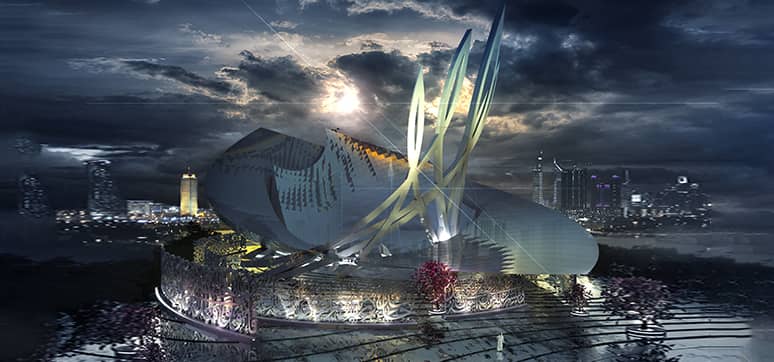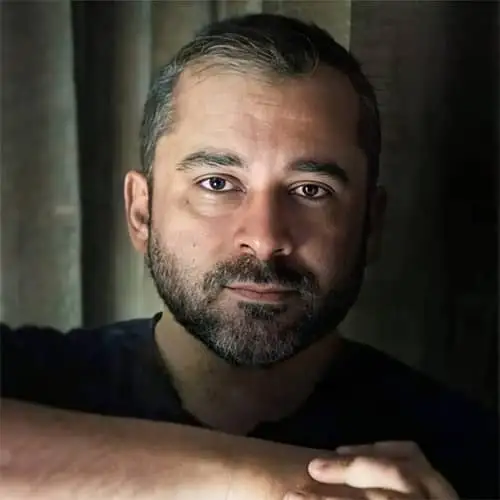Vitiligo is known medically as patches of skin to lose pigment or colour whereas, on the other hand, Melasma is known as the hyperpigmentary of skin. Two opposite medical skin diseases that do not only occur on our skin but also on our building’s façades as well. The poorly designed façades either dilute the cultural and social identity and context or enforce the personal taste and preferences of today’s architects without the profound study of the context and region’s history. It is a modern-day architectural disease.
Double skin, Porous skin, breathing skin, kinetic skin, parametric skin!! Our contemporary architecture carried a myriad variety of notions and advancements for the architect to choose from what serves his purpose and mindset. So where is the blemish?! Modern-day architects fall into that dilemma, between the nostalgia of the past versus the aspirations towards the future, and recently were taken by storm due to the tsunami of computer applications and advancements.
As an architect and scholar descending from the Middle East, I have always been fascinated by the complex interplay between form, function, context, and recent technology in architecture. Walking in the same streets people used to walk in and using the same building people used to occupy for the last 5000 years. This huge accumulation of experiences resulted in a profound architectural legacy. In particular, the way that buildings interact with their surroundings, both natural and built, is an area of intense interest to theorists.
Nowhere is this interplay more evident than in the Middle East, where the harsh desert environment and the region’s rich cultural heritage have shaped some of the most innovative and striking architectural forms in the world. In this article, I would like to explore the role of façades in Middle Eastern architecture, and how these elements are used to create buildings that are not only functional and visually stunning but depict and convey silent messages to be elicited by the building users. In Middle Eastern architecture, the façade is much more than just a decorative element. It is a crucial part of the building’s overall design, serving as a filter between the harsh desert environment and the interior spaces. In this sense, the façade is both functional and aesthetic, providing shade and protection from the elements. But it can also be a canvas for innovative and visually striking design, creating a building that is as much a work of art as it is a functional structure.
Recent technological advancements didn’t shift those values away, on the contrary, they integrated with its role and served them well to evolve into new interesting representations that carry the spirit of the past and the face of the future. One example of this is the “Words of God” mosque in Dubai Creek. A project designed and developed throughout the international competition held by Emar group in 2018.
So, what is the story behind this mosque?
In the beginning, was the Word, and the Word was with God, and the Word was the divine representation of God. Prayer is nothing less than being in the presence of the Almighty God, who created the sun, the moon, and the stars, the past, the present, and the future. Entering the Realm of Mercy, walking through the words of God as if we are entering a heavenly realm on earth.
The approach of the building starts with a two-height story calligraphy visualisations of some verses of the Quran in the form of walls that represent the words of God that surround the mosque in concentric circles. As one walks through the words, he is entering the sacred realm of prayer.
The Design of the mosque was intended to act as a living organism that spiritually interacts with and influences the surrounding urban landmarks and street life. The mosque’s exterior features a series of interlocking calligraphy walls that create a delicate, lacy effect that filters the intense sunlight while also providing shade for visitors. The result is a building that is both functional and beautiful, creating a dynamic dialogue between the structure, users, and its surroundings.
The mosque’s outer skin is composed of multi-layers of wrappings; which has a highly complex and reflective façade. This façade serves several functions, including reducing heat gain and glare, improving energy efficiency, and creating a stunning visual effect that changes throughout the day as the sun moves across the sky.
This dynamic relationship between the building and its environment is a hallmark of Middle Eastern architecture and is something that I believe more architects should explore. One layer carries the indented words of God (Verses of the Quran). Another layer that reflects the surrounding urban landmarks is a direct interaction between the mass of the mosque and the city of Dubai.
The Carved mass of the mosque creates a concave surface that welcomes the comers from the Creek area and reflects the Dubai Creek tower. The reflective skin of the mosque utilises a technology called thermo-chromic modules, where its color changes by the different thermal patterns generated on the surface across the day, to give it the sense of changeability as a living organism.
The building’s intricate geometry is illuminated at night, creating a dramatic and unforgettable visual effect that highlights the structure’s innovative design and celebrates the region’s cultural heritage.
The minaret was replaced by a high landmark that symbolises the word Allah that can be viewed from almost all different directions around the mosque from miles away. “To be a ZERO ENERGY BUILDING or not !!” The Mosque is designed to be a zero-carbon building generating energy from Solar panels that covers the outer skin of the Building and a Piezo-electric effect on the floor tiles, while the exterior is illuminated in the evening with a series of various lighting patterns that highlight the building’s intricate calligraphy.
The Floor of the whole prayer hall is covered with piezoelectric tiles to generate electrical energy through the movement and prayers performed by the worshipers to visualise the below verse.Piezo Electric floors that generate energy by the worshippers’ movement will act as a Faith-o- meter, the more worshippers, the more power that will illuminate the building.
In conclusion, by carefully considering the building’s context and using innovative design strategies and technologies, architects can create buildings that are both functionally successful and visually stunning, and that serve as a testament to the power of thought manifested in architecture to shape our environment, society, and eventually the world. Creating a dynamic dialogue between the building and its surroundings. The result is a built environment that reflects the region’s rich cultural heritage while also pushing the boundaries of architectural design and innovation to decades yet to come in the future.














